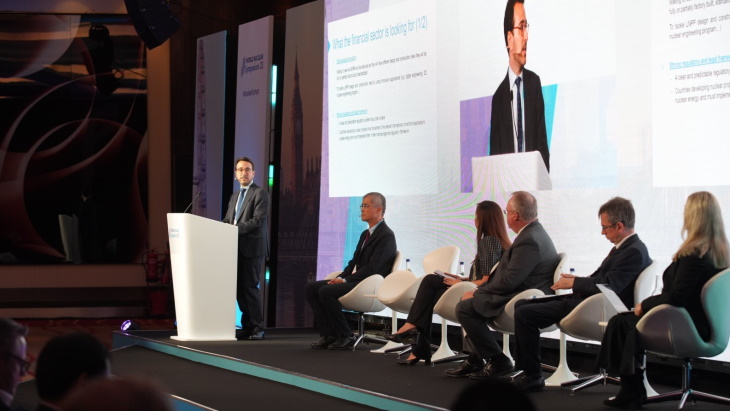Successful nuclear projects key for future investments

"Nuclear energy could and should play an important role in ensuring the rapid and secure energy transitions, and investments in nuclear must step up fast," said Keisuke Sadamori, Director of Energy Markets and Security at the International Energy Agency (IEA). "Existing nuclear power plants need to be extended."
However, he noted: "While increasing year-on-year at the rate of nearly 15% from about USD37 billion in 2019 - before COVID - to USD65 billion in 2023, nuclear investments remain a small part of overall clean energy investments, around a 4% share."
Speaking during a session on Investing in Nuclear on 8 September, Sadamori said the IEA released its Nuclear Power and the Secure Energy Transitions report more than a year ago. Under the report's net-zero scenario, nuclear power needs to double from around 400 GW now to more than 800 GW in 2050. "Less nuclear power would make the net-zero transition harder, more expensive and riskier," he added.
"The resurgence of nuclear power in the net-zero scenario entails a massive increase in investments in the coming decades," Sadamori said. "Global investments in nuclear surges over USD100 billion in the first half of the 2030s in the net-zero scenario, and that's over three times the average of the 2010s."
Innovative funding models
Nuclear projects have for many years relied on state ownership or the regulated monopoly structure to guarantee revenues and reduce risks to investors, Sadamori noted. However, there are private sector investors willing to finance such projects but innovative financing mechanisms are needed to secure this funding.
"The key concern that investors see is the duration that it takes to put a project up to connection, up to operation," said Julien Bocobza, partner in the Japan office of White & Case LLC. "You've got naturally the development phase, the planning stage, which is borne by investors, by equity providers, by developers. But even once the project is approved and starts construction, the typical duration, because everything has to be customised, is around seven years.
"The impact on the financing is tremendous, in particular because it means you need to have the amount of cash available to pay interest during construction. So you are really paying lenders for seven years before you start getting any revenue, which creates issues. But also given that scale, you need a very long period to repay that loan, which then is often an issue with commercial lenders who cannot go beyond 15, 18 years typically for repayment periods."
Details about the UK's Regulated Assets Base (RAB) funding model, which is being used for financing the Sizewell C project, were outlined by Iain Smedley, chairman of power and utilities banking at Barclays. Under this model, a company receives a licence from an economic regulator to charge a regulated price to consumers in exchange for providing the infrastructure in question. He said the model "from an investor perspective, is structured to produce attractive, stable, low-risk and inflation-linked returns at scale".
Smedley added: "The RAB model is designed to set up a structure that provides a high level of certainty and confidence and predictability for investors, whilst also making sure that there are appropriate incentives in place."
Showcasing successful projects
All the speakers on the panel agreed on the need for the nuclear industry to deliver projects on time and on budget in order to attract funding from investors.
"What the financial sector sees ... is delays and cost overruns," Bocobza said. "And how will each project deal with that? Clearly for lenders, it is what they are going to look at in the first instance. They will not take that risk or they will be very reluctant to take that risk until it's clearly mitigated."
He added: "Having very successful stories about being on time and on budget will really, really help. And that's why I agree it was fantastic to hear those stories because it gives confidence. Lessons learned I think is absolutely key in the construction space, of course, but also for governments to make sure that if you're putting together a new programme you understand what worked, what didn't work, and you actually implement gateways to ensure that you make it work."
"The key here is being able to showcase to the world that we can deliver large-scale projects on time and on budget," added Kevin Kelly, executive VP, finance and CFO, Bruce Power. "And, you know, whether it's a multiple billion dollar refurbishment or new build, you got to stick to the basic principles of having your engineering done, getting your long-lead parts, having an established supply chain."
Sadamori said it should not just come down to the industry to attract the necessary finance for nuclear projects. "Governments need to have a very strong policy to ensure public awareness of the possible important contributions from nuclear for both energy security and climate change mitigation, and also, as presented, the needed financial mechanisms to ensure the needed investments in nuclear, because the current competitive unbundled electricity power systems in mostly the advanced economies are not good enough to ensure the necessary investments into assets like nuclear."
_92619.jpg)

_84504.jpg)







_50521.jpg)

